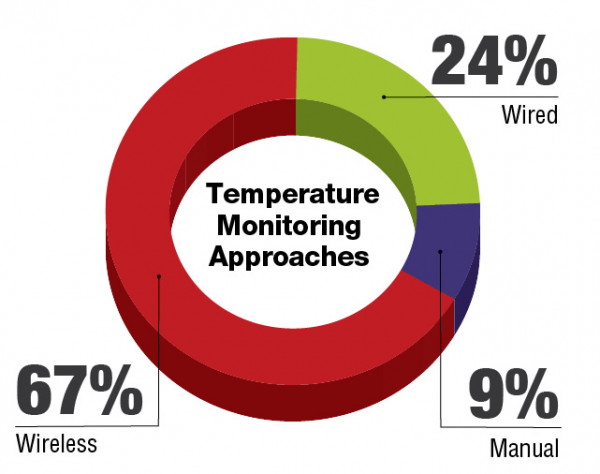- Show Menu
- Contact Us
- FAQs
- Reader Service
- Survey Data
- Survey Winners
- Testimonials
- Upcoming Events
- Webinars
- White Papers
Temperature Monitoring
Replacing paper logs with an automated temperature monitoring system is a straightforward process that delivers significant dividends, from simplified audits and reduced product loss to peace of mind. Perhaps the biggest challenge is choosing a vendor in this busy marketplace, where most systems deliver strong user satisfaction.
For more information, visit pppmag.com/automation and select Automation Systems, then Temperature Monitoring.

Wireless temperature monitoring is the most popular approach for ensuring appropriate medication storage. Two-thirds of all facilities utilize the wireless approach, while an additional 24% have wired temperature monitoring systems in place.

Fewer than 10% of facilities continue to rely on a manual approach to monitoring temperatures, with most planning to adopt an automated system over the next few years.

With an impressive breadth of temperature monitoring system options available to pharmacy, finding the optimal solution for a given facility’s needs is not a challenge. Leading this busy marketplace are Cooper-Atkins and Stanley Healthcare.
Click here to view a larger version of this Chart.

Among those facilities that have yet to implement automated temperature monitoring, two-thirds plan to purchase this technology within the next few years.

Most new adoptions (69%) are projected to occur over the next two years.

For those facilities looking to add automated temperature monitoring to their medication storage, Thermo Fisher and Cooper-Atkins are among the leading vendors under consideration. However, it is notable that almost half of all pharmacy directors (45%) have yet to determine which vendors they will review during their purchasing process.
Click here to view a larger version of this Chart.
Like what you've read? Please log in or create a free account to enjoy more of what www.pppmag.com has to offer.








